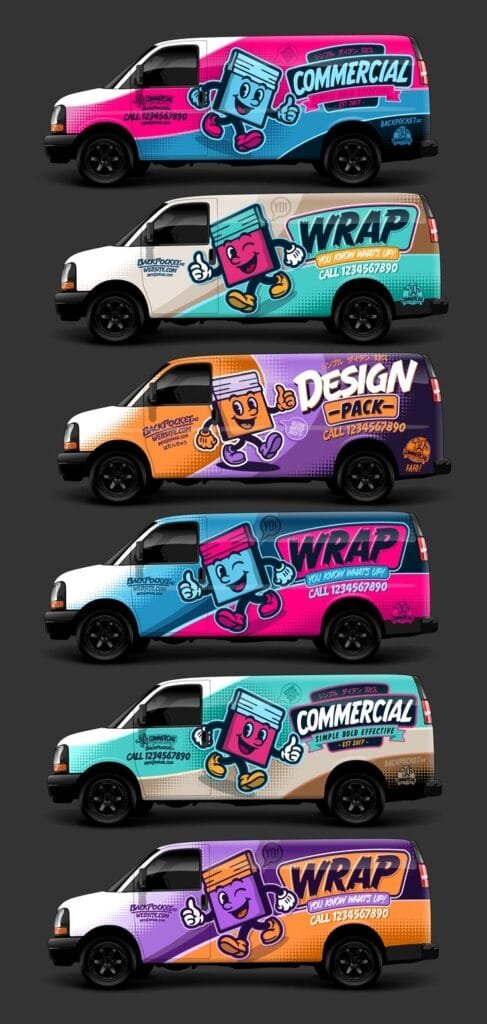Car Advertising
In the world of marketing and advertising, business owners are constantly seeking the most effective ways to reach their audience. While traditional advertising still maintains a strong market presence, new methods like car advertising have captured the interest of many advertisers. But what are the differences between the two? And which is more suitable? In this comprehensive guide, we’ll take you on a tour explaining the key differences between traditional advertising and car advertising in a simple and thorough manner.
Car Advertising Traditional Advertising Car Advertising Types of Advertising Mobile Advertising
First: What is Traditional Advertising? Traditional advertising refers to any promotional medium used before the advent of the internet and digital technologies. Its most famous examples include:
- Newspaper and magazine ads
- Billboards on roads
- Television and radio commercials
- Print materials like brochures and posters
These mediums focus on delivering a clear message to a broad audience, often targeting a specific geographic area or a wide age demographic.
Second: What is Car Advertising? Car advertising is a relatively modern advertising medium that relies on wrapping private or public vehicles with advertisements, or installing digital panels or vinyl wraps on the vehicle’s exterior to display the marketing message.
These vehicles travel through streets and neighborhoods, making the advertisement visible to the maximum number of people, especially in crowded areas or during peak times.
Difference One: Movement vs. Stationarity One of the most prominent differences is that traditional advertising is often stationary, like a billboard mounted on a building or an ad in a magazine, whereas car advertising is characterized by continuous movement.
This movement adds a competitive advantage, as the advertising message travels through various neighborhoods and areas, increasing the likelihood of it being seen by a larger number of people without requiring additional costs.
Car Advertising Traditional Advertising Car Advertising Types of Advertising Mobile Advertising
Difference Two: Cost and Effectiveness Traditional advertising – especially television or radio – can be very expensive and requires high-quality production. Car advertising, on the other hand, is generally relatively lower cost in terms of design and execution and lasts for longer periods.
Furthermore, a car advertisement can reach the same target audience repeatedly daily, simply through the vehicle’s natural movement within the city.
Difference Three: Geographic Targeting Traditional advertising relies on selecting a single location or specific channel to broadcast the message. For example, a billboard might be placed on a main street, or the ad might air on a local channel.
Car advertising, however, is considered more geographically flexible. The vehicle can be directed to specific neighborhoods or areas according to the marketing campaign strategy, increasing the ability to reach a precisely targeted audience.
Difference Four: Interaction and Innovation While traditional advertising tends to be direct and static, car advertising offers opportunities for creativity and innovation, both in design and interaction.
Some companies use vehicles equipped with digital screens, or even QR codes that can be scanned directly from the car to visit a website or get a special offer, creating a unique interactive experience.
Difference Five: Visual Impact When people see a car carrying a distinctive advertisement with an eye-catching design, it leaves a strong visual impression, especially if the vehicle passes regularly through crowded places like traffic lights or shopping mall parking lots.
This type of promotion makes the brand feel closer to the consumer because it moves with them in the same daily space.
Difference Six: Campaign Duration Traditional advertising campaigns are often limited to a specific time frame, such as a week or a month. Once the period ends, the advertisement is removed or its broadcast is stopped.
In car advertising, however, the campaign can continue for several months without needing significant changes, as the same vehicle performs the task daily, providing continuity in promotion without additional operating costs.
Difference Seven: Impact on Memory Marketing studies indicate that repeatedly seeing an advertisement helps embed it in the audience’s memory. Traditional ads are seen once or for a limited period.
Vehicles carrying advertisements, however, achieve excellent visual repetition, especially if they pass the same route daily. This reinforces brand recall and associates it with daily life.
Difference Eight: Level of Ad Clutter Car Advertising Traditional Advertising Car Advertising Types of Advertising Mobile Advertising
Sometimes, consumers may experience “ad clutter” due to the abundance of repeated traditional ads everywhere – from newspapers and billboards to television.
Car advertising, being relatively new and characterized by its rarity compared to other ads, has the advantage of easily grabbing attention without being intrusive.
Difference Nine: Flexibility in Modification If a campaign requires a quick modification to the design or message, traditional advertising might take longer and require more effort for reprinting or redistribution.
In car advertising, the wrap or vinyl can be easily replaced, giving advertisers flexibility in adjusting messages as needed.
When to Choose Traditional Advertising?
- If you are targeting a specific audience that watches a particular channel or reads a specific magazine.
- If your campaign is tied to an event or a short time frame.
- If you want an advertisement that focuses on credibility and rapid spread within a limited time period.
When to Choose Car Advertising?
- If you are looking for long-term promotion at a reasonable cost.
- If you want to reach a broad audience in multiple locations.
- If you prefer an innovative and eye-catching advertising method.
- If your product targets people on the street or during their daily commute.
Conclusion Each type of advertising has its own advantages. The choice between traditional advertising and car advertising depends on the campaign’s objectives, the target audience, and the available budget. What can be emphasized is that car advertising has become a smart and suitable option for many brands seeking an innovative and effective promotional method.









